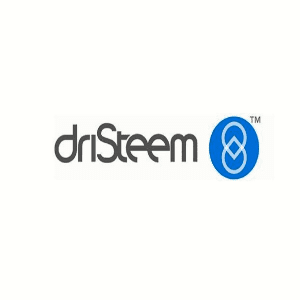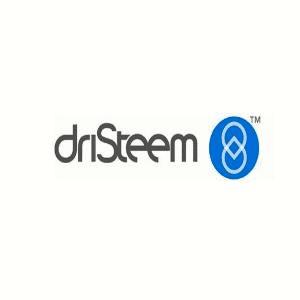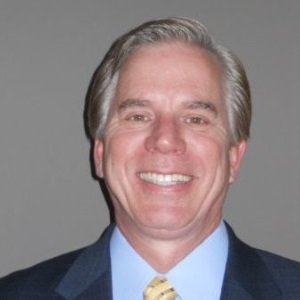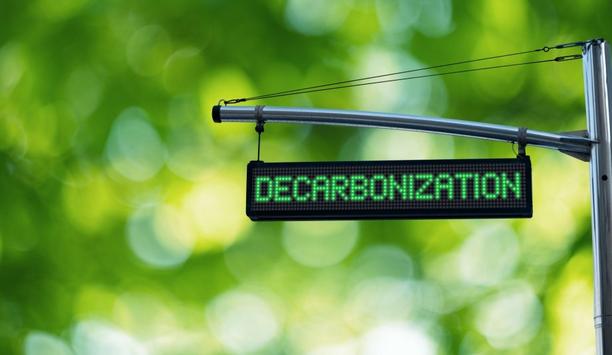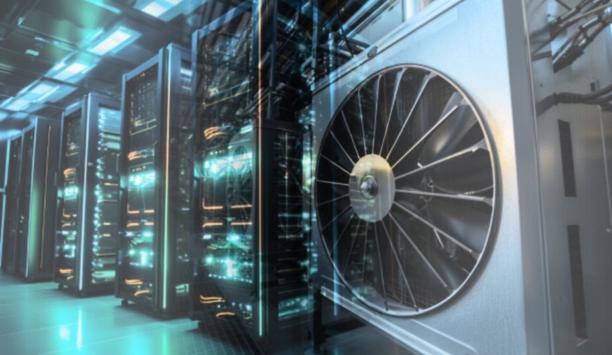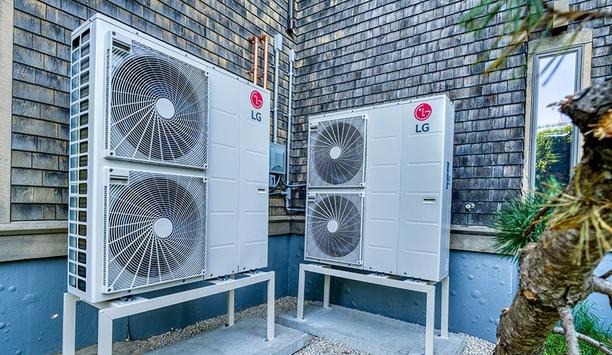DriSteem - Experts & Thought Leaders
Latest DriSteem news & announcements
DRI-STEEM Corporation (DriSteem), the pioneer manufacturer of humidification, evaporative cooling, and water treatment products, proudly celebrates its 60th anniversary in 2025. DriSteem has been a trusted name in the HVAC industry for six decades, and it is known for innovation, performance, and unmatched customer support. Advancing Air Quality DriSteem has been committed to helping customers achieve precise controlSince its founding in 1965, DriSteem has been committed to helping customers achieve precise control of humidity and indoor air quality in commercial, industrial, and institutional spaces. The company continues to push boundaries with energy-efficient technologies, advanced controllers, and state-of-the-art water treatment systems that serve industries ranging from healthcare and data centers to museums and universities. “Reaching 60 years is a remarkable milestone, and it’s a testament to the dedication of our employees, the loyalty of our customers, and the strength of our partnerships,” said David Pflum, DriSteem President. “As we reflect on our journey, we’re proud to celebrate 60 years of quality—not just in our products, but in every relationship, we’ve built along the way.” Years of Innovation A Ground-breaking Beginning: DriSteem was the first in the industry to deliver truly dry steam with its groundbreaking steam injection humidifier. Industry First: Launched the STS® steam-to-steam humidifier, the first to boil fresh water using boiler steam as the energy source. Engineering Breakthrough: Invented the Ultra-sorb® XV—the only non-pressurized steam dispersion panel capable of returning condensate to the boiler without additional equipment, enhancing efficiency and simplifying installation. Modern Innovation: Introduced the GTS® LX gas-to-steam humidifier, which offers condensing high-efficiency performance with ultra-low NOx emissions and addresses environmental concerns while delivering superior humidification. Smart Performance: Developed the RTS® humidifier, a compact, cabinet-style unit compatible with all water types and featuring advanced controls that learn as the humidifier runs to provide precise humidity management. Innovation Beyond the Product DriSteem empowers customers with the knowledge and effective humidity control systems DriSteem’s commitment to excellence goes far beyond product innovation. The company is equally dedicated to supporting customers through every project lifecycle stage. From initial design to long-term system maintenance, DriSteem offers comprehensive resources and expert guidance to ensure success. Through in-depth training programs, DriSteem empowers customers and partners with the knowledge they need to design and implement effective humidity control systems. First-class factory visit experiences give customers a hands-on look at the company’s manufacturing capabilities, quality standards, and advanced technologies. Reliable System Performance DriSteem’s application support team helps solve unique challenges and tailors solutions to specific project requirements, while field service professionals ensure systems run reliably and efficiently. In addition, quick access to replacement parts helps minimize downtime and keep operations running smoothly.
DRI-STEEM Corporation (DriSteem), the globally renowned manufacturer of humidity control, evaporative cooling, and water treatment products, is excited to announce that Jake Wegner has joined DriSteem as Director of Sales, Americas. In his new position, Jake will be responsible for all aspects of DriSteem sales operations in North America plus Central and South America. This includes overseeing the regional sales management team, inside sales support, and OEM sales. Sales and marketing teams Jake has a proven track record of leading sales teams and driving growth in various industries. Most recently, he was with Hiniker Co., a manufacturer of snow removal and agricultural equipment, where he led both outside and inside sales and marketing teams for both divisions. "Jake Wegner brings a wealth of experience and a proven track record of driving sales growth," said David Pflum, President of DriSteem, adding "We are thrilled to welcome him to DriSteem and are confident that his leadership will further strengthen our position in the market."
DRI-STEEM Corporation (DriSteem), the pioneering manufacturer of humidity control, evaporative cooling, and water treatment products, is pleased to announce that Eric Skare has joined DriSteem as Senior Product Manager. Eric will oversee DriSteem’s Adiatec® evaporative cooling and humidification systems, which include high-pressure atomization and ultrasonic technologies. He will also manage DriSteem reverse osmosis water treatment systems and pre-treatment solutions. Compliance to the DriSteem team Prior to joining DriSteem, Eric worked as a Product Manager at Boveda Inc., and Uponor, Inc. He brings years of experience with new product development, specification management, and regulatory compliance to the DriSteem team. "We are delighted to announce that Eric has joined our team," said Jennifer Montville, Director of Marketing at DriSteem. "His experience will be instrumental in supporting and enhancing our lineup of adiabatic and water treatment products. We are thrilled to have him on board."
Insights & Opinions from thought leaders at DriSteem
Humidity can influence employee health and productivity in the workplace. Humidity, temperature, and ventilation all work in concert to create a healthy indoor environment that supports overall occupant well-being. “Dry indoor air can cause discomfort in the form of dry skin, eyes, and throat for staff and visitors,” says Jennifer Montville, Director of Marketing at DriSteem, a manufacturer of humidification systems. Air-related health issues “There are real costs associated with health-related issues caused by dry air, including a higher occurrence of infections and increased rates of staff absenteeism?” Maintaining a comfortable work environment, including the correct humidity levels, prevents respiratory issues and reduces the spread of illnesses, ensuring a healthy working environment and boosting productivity and efficiency, says Montville. humidity levels Humidified spaces help keep facility costs down by improving thermal comfort at lower temperatures Maintaining humidity levels between 40% and 60% RH is ideal for mitigating virus transmission, she comments. Humidified spaces feel warmer and are more comfortable for employees, which in turn increases their productivity with improved concentration and less fatigue. It also helps keep facility costs down by improving thermal comfort at lower temperatures. dehumidifiers Employing dehumidifiers to keep humidity levels from rising above that 60% RH threshold is also important. Removing excess moisture from the air reduces distraction from unpleasant smells or health issues caused by mold, mildew, or fungi that thrive in moist environments. All the ways that proper humidity levels affect employee health and productivity in the workplace also contribute to increased customer satisfaction in office and retail spaces, says Montville. preventing product issues “We all prefer to spend time in places where we feel physically comfortable,” she says. “Customers in offices and retail spaces are no different. When physical comfort is not an issue, we are likely to spend more time and engage more deeply.” Well-managed humidity levels also help to prevent product issues such as shrinkage, warping, or degradation due to moisture fluctuations. Food quality is particularly impacted by humidity levels. In a retail store, this can translate to spending more time shopping in a store and a more positive opinion of the products being considered. recommended indoor relative humidity level Keeping relative humidity levels within the range ensures the health and safety of building occupants The recommended indoor relative humidity level ranges from 30% to 60% RH, according to guidelines published by the American Society of Heating, Refrigerating, and Air-Conditioning Engineers (ASHRAE). Keeping relative humidity levels within this range ensures the health and safety of building occupants without promoting mold growth or other indoor air quality issues. air quality goals With that said, the type of indoor space, air quality goals, and how the space is used will determine the best relative humidity levels for each facility, according to Montville. Machinery and sensitive electronic equipment are vulnerable to low or fluctuating moisture levels. Static electricity buildup and electrical malfunctions are among the potential consequences of inadequate humidity control. precise humidity control Many industrial processes depend on the consistent quality of materials, and fluctuations in relative humidity (RH) can result in less-than-ideal inputs which in turn impact the quality of final products. From preventing mold growth, spoilage, and texture deterioration in food processing to safeguarding medication stability, efficacy, and safety of pharmaceuticals, precise humidity control is critical to achieving intended results. Optimal RH levels Adequate humidity also supports the body's natural defense mechanisms, enhancing the effectiveness Maintaining appropriate humidity levels is essential for infection control. Optimal RH levels can inhibit the growth and transmission of airborne pathogens, such as viruses, bacteria, and fungi. Adequate humidity also supports the body's natural defense mechanisms, enhancing the effectiveness of respiratory tract mucous membranes in trapping and neutralizing pathogens. Conversely, dry indoor air impairs these defenses, increasing susceptibility to respiratory infections. humidity control systems Investing in commercial humidity control systems, such as those offered by DriSteem, can effectively regulate RH levels within facilities. “These systems provide flexibility and precision in catering to specific humidity needs across different areas within the facility,” says Montville. Whether integrating humidity control solutions in existing structures or implementing them in new buildings, factors such as the type of indoor space, energy source, required maintenance, and capacity determine the best technology for each building, she says.
From A To L: Your A2L Transition Guide
DownloadLeveraging Radiant And Hydronics To Help Achieve Decarbonization Goals
DownloadSealed Connectors In Harsh Environments
DownloadPowering And Cooling Next Generation Data Centers
DownloadDebunking Myths To Promote A Bright Future For Heat Pumps
Download
